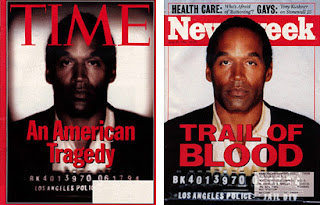Lines
1. What composition rule did you follow the rule?
This is under the rule of lines, I followed the rule, the lines on the ceiling are pointed towards the center of my picture, and the dark lines on the window are pointing down directing your eyes to the center of my picture.
2. What is the subject (be very very specific)?
My subject is the center table, with the girl in the red shirt, because that's the table that the lines point to.
3. Is it clear to people looking at your photos what the subject is?
No, not really, because there's a lot going on in the background. Which makes it a little difficult to find what I want you to see.
4. If you can't very clearly see what the subject is, what could you have done differently?
I could've found a better angle to take the picture, so that the background was more simple, and there wasn't as much going on.
Merger
1. What composition rule did you follow the rule?This is a merger, you can tell by the boys arm is merging into the window pane, which makes it hard to see him and his arm.
2. What is the subject (be very very specific)?The subject would probably be the boy, his arm, and the window pane, because that's what is being merged together.
3. Is it clear to people looking at your photos what the subject is?No, but that was the point of the picture, to know what not to do.
4. If you can't very clearly see what the subject is, what could you have done differently?
I could've gotten better lighting, so that it was clear, and a different angle so that the student wasn't in front of the window.
Balance
1. What composition rule did you follow the rule?The rule I followed was balance because the picture is split perfectly in half, and the water spout shows the center of the picture and it's split in half.
2. What is the subject (be very very specific)?The subject is the boy and the girl, and how they split the picture.
3. Is it clear to people looking at your photos what the subject is?Yes, because I made sure that it was obvious that the center of my picture was the girl and the boy.
4. If you can't very clearly see what the subject is, what could you have done differently?
Simplicity
1. What composition rule did you follow the rule?
The rule I followed is simplicity, because the background is very simple and so then you're focused on subject.
2. What is the subject (be very very specific)?The subject is the potato, which is the center and that is what your eyes see first.
3. Is it clear to people looking at your photos what the subject is?Yes I believe so, because that is what your eyes go to first, plus experiment they were doing was about the potato.
4. If you can't very clearly see what the subject is, what could you have done differently?
Rule of Thirds
1. What composition rule did you follow the rule?Rule of thirds you can tell because the boy is in the lower left hand corner which is in one of the points of the graph.
2. What is the subject (be very very specific)?The boy is my subject you know this because he is in focus, closer to the camera, and he is the first thing you see.
3. Is it clear to people looking at your photos what the subject is?Yes, I believe that it is clear that the boy is the subject of my picture.
4. If you can't very clearly see what the subject is, what could you have done differently?
Framing
1. What composition rule did you follow the rule?
The rule I followed is framing you know this because the skull which is my subject is framed by the window and the ledge.
2. What is the subject (be very very specific)?
My subject is the skull facing the camera and is the one that you can see it's nose and eye sockets.
3. Is it clear to people looking at your photos what the subject is?
Yes, I think that it's clear that my subject is the first skull because it is the only one facing the camera, and is the one that's framed by the window and the ledge.
4. If you can't very clearly see what the subject is, what could you have done differently?




























